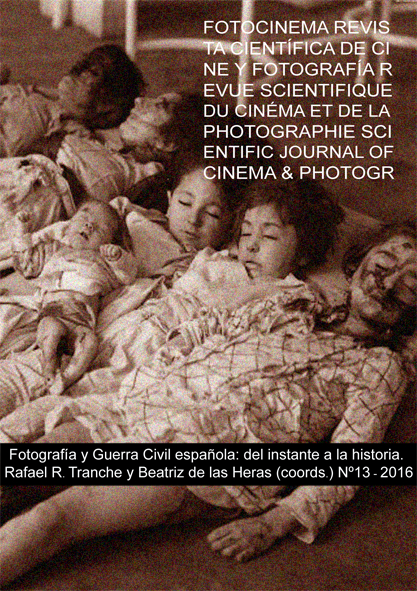El boom gastronómico en la gran pantalla. ¿Estamos ante un nuevo género cinematográfico?
DOI:
https://doi.org/10.24310/Fotocinema.2016.v0i13.6062Abstract
El estudio sobre los géneros cinematográficos es un tema que ha generado debate entre los académicos que buscan una definición formal de los mismos. Aunque el debate no está resuelto, la mercantilización que condiciona al cine como Industria Cultural da pie, cada vez más, al desarrollo de estilos y modelos de hacer cine, que a su vez contribuyen a la proliferación de nuevos géneros y subgéneros.
La gastronomía en general y el concepto de globalización culinaria en el cine, es un género relativamente reciente, aunque desde los orígenes del cine podemos detectar ejemplos en los que el ente gastronómico absorbe el argumento principal de las narraciones.
Este trabajo pretende poner en contexto la relación entre gastronomía y cine, no sólo en la actualidad sino también con carácter histórico, con la intención de conocer los enfoques significativos que se han atribuido al arte culinario en la gran pantalla, las similitudes y condicionantes que sustentan esta relación para poder justificar la consolidación del género gastronómico en el cine.
Abstract:
The study of film genres is an issue that has generated debate among academics looking for a formal definition of them. Although the debate is not turned, the commodification that determines the cinema as a Cultural Industry generates the development of filmmaking styles and models that contribute to the proliferation of new genres and subgenres.
Gastronomy, meanwhile, has become a powerful creative industry, recently, which is contributing to the development of audiovisual cultural products. Although the concept of culinary globalization in cinema is a relatively new genre, from the origins of cinema we can identify instances where gastronomy is the main argument of narratives.
This paper seeks to contextualize the relationship between gastronomy and cinema both now and throughout history, with the intention of determining the significant approaches that have been attributed to gastronomy in cinema, similarities and conditions underlying this relationship and justify the consolidation of culinary genre in film.
Palabras clave:
Cine; gastronomía; género cinematográfico; narrativa; Industria Cultural
Keywords:
Culinary Art; Cinema; Gastronomy; Film Genre; Narrative; Cultural IndustryDownloads
Metrics
Publication Facts
Reviewer profiles N/A
Author statements
Indexed in
-
—
- Academic society
- N/A
- Publisher
- Universidad de Málaga
Downloads
Published
How to Cite
Issue
Section
License
All contents published in Fotocinema Revista científica de cine y fotografía are protected under the Creative Commons Attribution-NonCommercial-ShareAlike 4.0 International (CC BY-NC-SA 4.0) license. All about this license is available in the following link: <http://creativecommons.org/licenses/by-nc-sa/4.0>
Users can copy, use, redistribute, share and exhibit publicly as long as:
- The original source and authorship of the material are cited (Journal, Publisher and URL of the work).
- It is not used for comercial purposes.
- The existence of the license and its especifications are mentioned.
There are two sets of authors’ rights: moral and property rights. Moral rights are perpetual prerogatives, unrenounceable, not-transferable, unalienable, imprescriptible and inembargable. According to authors’ rights legislation, Fotocinema. Revista científica de cine y fotografía recognizes and respects authors moral rights, as well as the ownership of property rights, which will be transferred to University of Malaga in open access. The property rights are referred to the benefits that are gained by the use or the dissemination of works. Fotocinema. Revista científica de cine y fotografía is published in an open access form and it is exclusively licenced by any means for doing or authorising distribution, dissemination, reproduction, , adaptation, translation or arrangement of works.
Authors are responsable for obtaining the necessary permission to use copyrighted images.














13.png)



